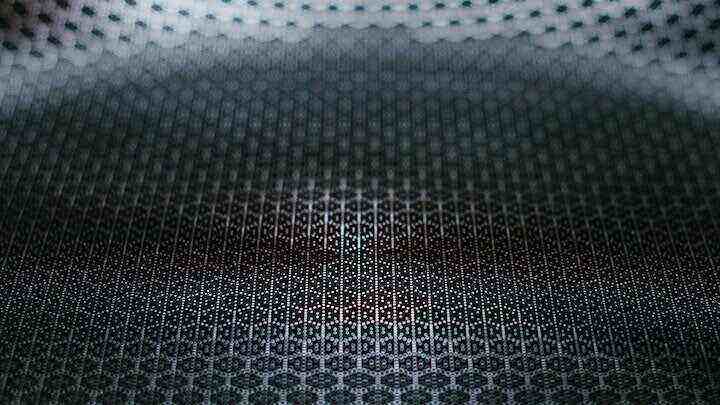Carbon fiber is relatively conductive. In other words, it is a natural conductor that can be made to conduct better under certain conditions. A good way to increase the conductivity of carbon fiber is to add a supporting material or additive.
While the conductivity of carbon fiber is greater than that of conductive rubbers and polymers, it is no match for metals like copper, silver, and aluminum. This is why it does not feature in practical applications like electrical distribution metal wires.
Aside from that, they lose too much energy to heat. Carbon fiber, on the other hand, has a conductive contribution. It contributes to galvanic corrosion when linked with different metals and can bleed off the accumulation of static electricity.
This guide will help you understand what carbon fibers are, their properties, how they conduct electricity and heat, and their real-life applications.
What are Carbon Fibers?

Carbon fibers are uniquely arranged long chains of carbon atoms with each unit displaying a graphite-like appearance. This arrangement occurs due to carbon’s ability to catenate (link atoms of similar elements).
They usually have a diameter of 5 to 10 micrometers. Their major advantage is superior tensile stress, chemical resistance, high strength-to-weight ratio, and low thermal expansion.
Is Plain Carbon Fiber Conductive?
Carbon fibers are slightly conductive without additives. In this form, they poorly conduct heat or electricity. High-quality ones boast a thermal conductivity equivalent to that of silicon or aluminum (at most).
Plain old carbon fiber, on the other hand, conducts electricity better. As electrical conductors, they are more suitable for creating carbon allotropes that are better conductors like diamond or graphite.
How Does Carbon Fiber Conduct Electricity?
Carbon fiber or graphene sheets enjoys the presence of free and delocalized electrons. These electrons give room for conduction between alternating single and double bonds.
This degree of conduction is, however, very low compared to that of metals. To boost conductivity in carbon fiber, reinforcing materials or additives are necessary.
How to Increase the Conductivity of Carbon Fiber?
The best way to increase the electrical conductivity of carbon fiber is to treat it with other materials or additives. The most suitable additives for this process are latex and silica fume.
Latex or natural rubber provides support for ionic conductivity while silica fume helps with electrical conductivity. Carbon fibers treated with allotropes like a diamond (with super heat conduction) also conduct electricity and heat better.
Creating these allotropes, however, is not a simple process. It requires pressure, heat, and chemical reactions.
Electrical Conductivity and Resistivity of Carbon Fiber
The electrical conductivity of any material is a measure of how much electron passage it can allow. Compared to metals, carbon fiber has a low electrical conductivity usually in the order of 10² S/m.
However, when you combine them with additives, their electrical conductivity shoots up to about 10⁴ S/m.
Uses of Carbon Fibers
Carbon fibers have various real-life applications because it has various important properties:
- Their lightweight and tensile stress make them ideal for aeronautical and marine applications. They also feature in the manufacture of luxury items like helmets and luggage.
- High-quality carbon fiber is used for EMI (electromagnetic) shielding and automatic hoods.
- Their low coefficient of thermal expansion makes them ideal for missiles and aircraft brakes.
- Carbon fibers now feature in some special wallets and watches.
- Their self-lubricating property makes them suitable for the manufacturing of different textiles.
- Carbon fiber feature in audio players like Hi-fi loudspeakers thanks to their excellent vibration damping.
- Medical applications such as X-ray devices, prostheses, and implants contain carbon fiber.
FAQs
Can carbon fiber be used as an electrical insulator?
No, it is not an ideal electrical insulator because it has extremely strong conductivity.
Carbon fiber majorly contains carbon (about 95%) and metal electron gas on both sides which give a conductivity similar to or more than that of metals.
What material is stronger than carbon fiber?
Graphene is stronger than carbon fiber.
It exhibits extreme strength and is lightweight better than carbon fiber.
What form of carbon is the poorest electrical conductor?
Diamond is an allotropic form of carbon and is a poor conductor of electricity.
Conclusion
Carbon is a versatile and popular element that can take different allotropic forms. Their fiber forms a long polymeric chain thanks to catenation. In terms of electrical conductivity, pure carbon fiber is a poor conductor of electricity or heat.
To get the best of their conductivity, they must be combined with additives like latex or silica fume. These external materials increase the availability of delocalized and freely moving electrons, hence, allowing better conductivity.
However, their exponential conductivity remains very low compared to metals. This may change shortly because engineers and researchers believe there is more to carbon fibers and how much they can impact conductivity.
I hope you found this guide helpful. Perhaps you would like to know how well additives such as latex conduct electricity, please see is rubber conductive.
Thanks for reading.

